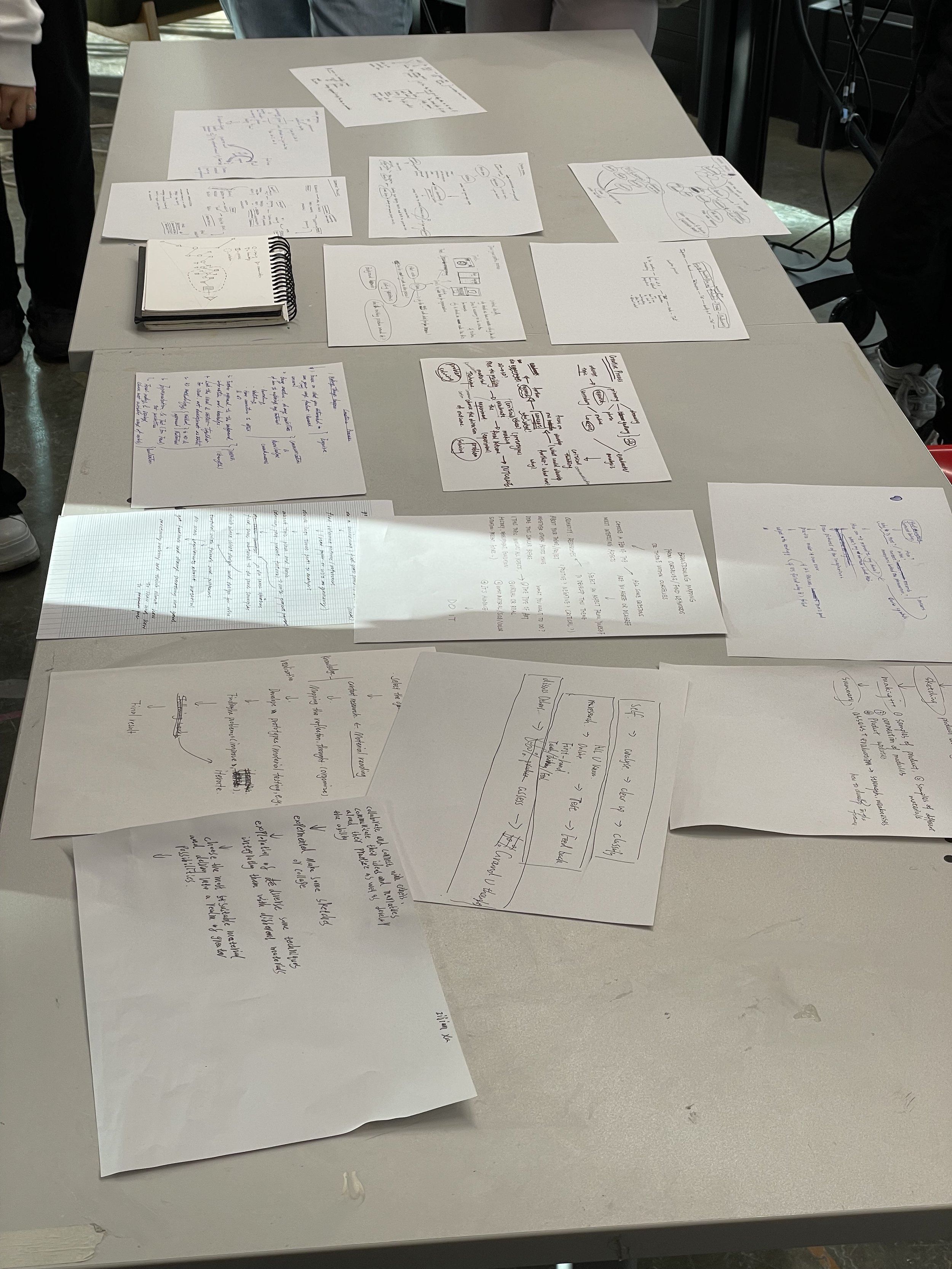Assessment literacy criteria workshop
Last week's Assessment Literacy Criteria Workshop, led by Simon, proved to be an enlightening experience. It not only demystified UAL's assessment system but also equipped us, the students, with tools to hone our critical thinking and organize our work more effectively.
The workshop was unique in its approach; we delved deeply into the criteria, dissecting and interpreting them in our own terms. This exercise was not just about understanding the guidelines but also about adapting them to our individual study and project workflows. Simon encouraged us to apply these criteria creatively, which resulted in a diverse array of diagrams and drawings from the class. This variety was particularly inspiring – while I approached the task rationally, others employed strikingly inventive methods, offering new perspectives on both the criteria and my workflow.
Despite these insights, I found myself questioning the overarching role of assessment criteria in shaping a student's journey. This reflection was partly sparked by Oscar's remark at the start of Unit 1, where he suggested that grades are not definitive markers of one's identity or the quality of one's work. As a designer with years of industry experience, I resonate with this view. I've come to prioritize the intrinsic value and satisfaction derived from my work over numerical grades or rankings. This perspective leads me to wonder: while criteria serve as a guiding reference, should they dictate our learning process, or do they risk reducing us to mere 'learning machines'?
In concluding, I recognize the utility of the assessment criteria provided by UAL. When used flexibly and critically, these guidelines can significantly enhance our projects and studies. They are not rigid rules but scaffolding to support our creative and intellectual growth. As a student transitioning back from a professional setting, I see these criteria as tools to refine my craft, not as the sole determinants of my success. Ultimately, the true measure of our growth lies in how we integrate these academic insights with our professional experiences to evolve as designers and artists.
Assessment literacy workshop
Assessment literacy workshop

